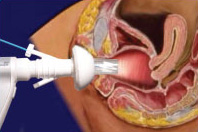
Photo from wikipedia
Introduction and hypothesisAnal incontinence following childbirth is prevalent and has a significant impact upon quality of life (QoL). Currently, there is no standard assessment for women after childbirth to identify… Click to show full abstract
Introduction and hypothesisAnal incontinence following childbirth is prevalent and has a significant impact upon quality of life (QoL). Currently, there is no standard assessment for women after childbirth to identify these symptoms. This systematic review aimed to identify non-invasive modalities used to identify women with anal incontinence following childbirth and assess response and reporting rates of anal incontinence for these modalities.MethodsOvid Medline, Allied and Complementary Medicine Database (AMED), Cumulative Index of Nursing and Allied Health Literature (CINAHL), Cochrane Collaboration, EMBASE and Web of Science databases were searched for studies using non-invasive modalities published from January 1966 to May 2018 to identify women with anal incontinence following childbirth. Study data including type of modality, response rates and reported prevalence of anal incontinence were extracted and critically appraised.ResultsOne hundred and nine studies were included from 1602 screened articles. Three types of non-invasive modalities were identified: validated questionnaires/symptom scales (n = 36 studies using 15 different instruments), non-validated questionnaires (n = 50 studies) and patient interviews (n = 23 studies). Mean response rates were 92% up to 6 weeks after childbirth. Non-personalised assessment modalities (validated and non-validated questionnaires) were associated with reporting of higher rates of anal incontinence compared with patient interview at all periods of follow-up after childbirth, which was statistically significant between 6 weeks and 1 year after childbirth (p < 0.05).ConclusionsThis systematic review confirms that questionnaires can be used effectively after childbirth to identify women with anal incontinence. Given the methodological limitations associated with non-validated questionnaires, assessing all women following childbirth for pelvic-floor symptomatology, including anal incontinence, using validated questionnaires should be considered.
Journal Title: International Urogynecology Journal
Year Published: 2018
Link to full text (if available)
Share on Social Media: Sign Up to like & get
recommendations!